Piano Pedal Usage Tips for Beginners: Master the Basics Fast
Category: Music Theory
Master Piano Pedal Basics with Ease
Starting out with the piano can be both thrilling and challenging, especially when it comes to mastering the pedals. If you’re a beginner musician or an enthusiastic learner looking to add nuance and expression to your piano playing, understanding how and when to use the sustain, soft, and sostenuto pedals is crucial. But figuring out the right pedal techniques can feel confusing—do you press and hold? When do you lift? What effect does each pedal have on the sound? This post is crafted just for you, offering clear, step-by-step guidance on piano pedal usage tailored for beginners. You may have searched for simple yet effective tips to avoid common beginner mistakes or how to incorporate pedal techniques without muddying your sound. Here, you’ll find practical explanations and easy-to-follow tutorials that connect theory with hands-on play. Unlike other guides that dive into complex jargon or assume prior knowledge, this post breaks everything down with simplicity and clarity. Whether you’re learning by ear or reading sheet music, these piano pedal tips will enhance your playing and confidence, making your practice sessions more rewarding. Read on to transform your approach and start making music that truly sings!
- Master Piano Pedal Basics with Ease
- Understanding Piano Pedals: Types and Functions
- When and How to Use the Sustain Pedal
- Mastering the Soft (Una Corda) Pedal
- Basics of the Sostenuto Pedal
- Common Mistakes to Avoid with Pedal Usage
- Pedal Techniques for Different Music Styles
- Integrating Pedal Use with Finger Technique
- Practice Exercises for Pedal Control
- Listening and Adjusting: Training Your Ear for Pedal Effects
- Choosing the Right Digital or Acoustic Piano Pedal Setup
Understanding Piano Pedals: Types and Functions
To truly bring your piano playing to life, it’s essential to get acquainted with the three main piano pedals: the sustain (damper) pedal, the soft (una corda) pedal, and the sostenuto pedal. Each pedal serves a distinct purpose and dramatically influences the expressiveness of your music.
-
Sustain Pedal (Right Pedal)
The sustain pedal is by far the most commonly used pedal on a piano. When pressed, it lifts all the dampers off the strings, allowing the notes to resonate and ring out even after you lift your fingers from the keys. This creates a rich, full sound and helps connect notes smoothly, adding warmth and depth to your playing. Mastering the sustain pedal is key to achieving fluid legato phrasing and dynamic expression, but it requires careful timing to avoid muddy or blurred chords. -
Soft Pedal (Left Pedal)
Also known as the una corda pedal, the soft pedal shifts the piano’s hammers so they strike fewer strings or hit them more softly, producing a gentler, more muted tone. This pedal is perfect for delicate passages or moments when you want to create a subtle, intimate atmosphere. Beginners sometimes neglect the soft pedal, but learning to use it effectively can greatly expand your dynamic palette and emotional range. -
Sostenuto Pedal (Middle Pedal)
The sostenuto pedal is less common but invaluable in advanced repertoire. It selectively sustains only the notes that are held down when the pedal is pressed, allowing you to sustain specific tones or chords while playing others normally. This selective sustain adds a layer of complexity and control that can dramatically affect your interpretation and textural richness.
Why Pedal Usage Matters: Beyond technical function, pedals shape the emotional impact of your music. Proper use illuminates the phrasing, enhances contrasts, and helps you convey the mood intended by composers. For beginners, understanding these pedals is the first step to moving from playing notes to making music that resonates emotionally. As you progress, experimenting with each pedal’s unique effects will unlock new dimensions of piano expression and artistry.
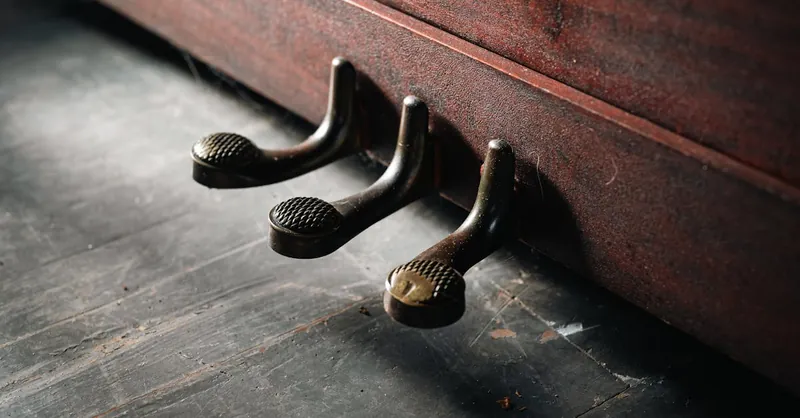
Image courtesy of Chris F
When and How to Use the Sustain Pedal
The sustain pedal is essential for adding richness and fluidity to your piano playing, but using it correctly requires precise timing and control. Beginners often face the challenge of avoiding sound muddiness, which occurs when the pedal is held down too long or pressed at the wrong moment, causing notes to blend together indistinctly. To unlock the full expressive potential of the sustain pedal without cluttering your sound, follow these practical tips for timing pedal presses and releases:
-
Pedal Down Shortly After Playing the Note
Press the sustain pedal just after striking a note or chord, not before. This timing helps each note sound clear and crisp initially, avoiding premature damping release that can muffle the attack of the sound. -
Change the Pedal Smoothly with Chord Changes
When moving to a new chord or phrase, briefly lift the pedal to clear the previous sound before pressing it down again for the new notes. This technique is called “pedal syncing” and helps keep harmonies clean by preventing overlapping tones. -
Lift the Pedal When the Sound Becomes Overwhelming
If the music starts to sound too thick or fuzzy, it’s a sign to release the pedal even if you haven’t changed chords. Being attentive to the texture of the sound and using the pedal as a subtle color tool rather than a constant effect is key.
Exercises for Developing Good Sustain Pedal Habits
Building solid pedal technique takes practice. Try these beginner-friendly exercises focused on timing and clarity:
- Single Chord Exercise: Play a chord, press the pedal shortly afterward, hold for two beats, then lift to prepare for the next chord. Repeat, gradually increasing speed while keeping the sound clean.
- Simple Scale with Pedal: Play a slow octave C major scale, pressing and releasing the pedal in rhythm with each note, to develop coordination between finger movement and pedal timing.
- Chord Progression Pedaling: Practice a common chord progression (e.g., C – F – G – C), using the “pedal syncing” technique to smoothly change pedal positions without overlapping sound.
By consciously controlling when to press and lift the sustain pedal, you’ll avoid muddy sounds and create a more polished, expressive performance. As you gain confidence, you’ll naturally enhance your phrasing and emotional impact, transforming simple notes into a beautifully connected musical story.
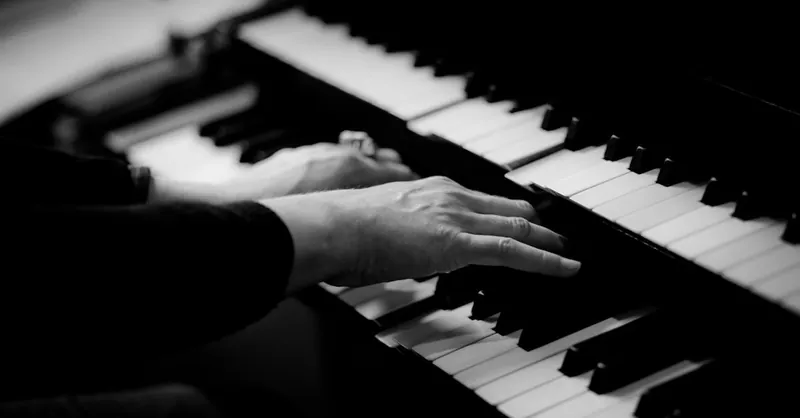
Image courtesy of Rene Terp
Mastering the Soft (Una Corda) Pedal
The soft pedal, also known as the una corda pedal, is a powerful tool for adding dynamic contrast and expressive nuance to your piano playing, especially in beginner pieces where subtlety can greatly enhance the musical mood. Unlike the sustain pedal, which lengthens and enriches sound, the soft pedal works by shifting the piano hammers so they strike fewer strings—usually one instead of three—resulting in a softer, warmer tone. This change in timbre allows you to create a gentle, intimate atmosphere, perfect for delicate phrases or quiet sections.
Why Use the Soft Pedal?
- Introduce quieter dynamics without altering your finger pressure, giving you better control over softer sounds.
- Add tonal variety to repeated notes or chords, preventing your playing from sounding monotonous.
- Highlight contrast between loud and soft passages, which is essential for musical expression and keeping listeners engaged.
Tips for Using the Soft Pedal Effectively as a Beginner
- Press the soft pedal gently and gradually—avoid abrupt or heavy presses to maintain control over the softness of the sound.
- Combine it with light finger touch, as the pedal softens the hammer strike but does not replace careful finger dynamics. Using both together yields the best results.
- Experiment in simple pieces by playing the same passage with and without the soft pedal to hear the tone difference clearly.
- Use the pedal sparingly, applying it to specific notes, phrases, or entire measures to add variety rather than dulling the overall texture.
- Listen closely to how the sound changes, training your ear to recognize when the soft pedal enhances expression without losing clarity.
By mastering the soft pedal early in your piano journey, you’ll develop a richer sense of dynamics and tone color. This pedal is your secret weapon for creating emotional depth and dynamic interest in beginner compositions, making your performances more compelling and musically satisfying.

Image courtesy of cottonbro studio
Basics of the Sostenuto Pedal
The sostenuto pedal—usually the middle pedal on a grand piano—is what makes this pedal truly unique compared to the more commonly used sustain and soft pedals. Unlike the sustain pedal, which lifts all dampers and sustains every note played, the sostenuto pedal sustains only those notes that are being held down at the moment the pedal is pressed. This selective sustain allows pianists to hold specific tones or chords while continuing to play other notes without sustaining them, creating interesting layers and textures within a piece.
What Makes the Sostenuto Pedal Unique?
- Selective Sustain: It sustains only the notes held when the pedal is engaged, leaving subsequent notes unaffected. This allows for precise control over which parts of the music linger.
- Textural Complexity: By sustaining a bass note or chord independently, you can create rich, overlapping harmonies or maintain a pedal point while playing moving lines on top.
- Versatility for Advanced Pieces: The sostenuto pedal is especially useful in complex repertoire that demands intricate layering and nuanced voicing.
When to Use the Sostenuto Pedal
While the sostenuto pedal is less common in beginner-friendly piano music, familiarizing yourself with its function is valuable early on because:
- It enhances your pedal technique awareness. Understanding selective sustain helps develop more refined control over your pedal use overall.
- It’s essential for certain classical and contemporary compositions. Pieces by composers like Debussy, Ravel, and Ligeti often require precise use of the sostenuto pedal.
- It prevents sound muddiness in complex passages. By sustaining only specific notes, the sostenuto pedal avoids the “wash” effect sometimes caused by the sustain pedal.
Why Beginners Should Know About the Sostenuto Pedal
Although the sostenuto pedal is less frequently used in beginner piano music and may not be present on all upright pianos, it’s beneficial for beginners to:
- Start recognizing pedal functions beyond simple sustain and softness.
- Build foundational knowledge that will support more advanced playing.
- Avoid confusion later when progressing to grand pianos or advanced repertoire where this pedal is standard.
In short, while the sostenuto pedal might seem like an advanced tool, gaining a clear understanding of its purpose and usage will enrich your overall musicality and equip you with the technical insight needed to tackle a wide range of piano literature confidently.

Image courtesy of cottonbro studio
Common Mistakes to Avoid with Pedal Usage
When starting out with piano pedals, it’s easy to fall into habits that can hinder your progress and muddy the clarity of your music. Avoiding common pitfalls like over-pedaling, holding the pedal too long, or neglecting hand and pedal coordination is essential for developing clean, expressive playing. Here are some of the most frequent mistakes beginners make—and how to correct them:
-
Over-Pedaling
Pressing the sustain pedal continuously or too frequently causes notes to blend excessively, creating a thick, indistinct sound known as pedal wash. Instead, think of the pedal as a color or spice to add selectively. Use it sparingly to connect specific notes or phrases, and always listen carefully to maintain clarity. -
Holding the Pedal Too Long
One of the biggest causes of muddy sound is releasing the pedal late or not lifting it at all during chord changes. Holding the pedal beyond a chord or harmonic shift blurs the harmony and masks the musical structure. Practice precise pedal lifts timed with your changes in harmony to keep the music transparent and articulate. -
Not Coordinating Pedal Use with Hand Movements
Pedal technique isn’t just about foot movements; it requires seamless synchronization with your hands. Pressing or releasing the pedal too early or too late relative to your finger action leads to off-timing and awkward sound transitions. Developing hand-pedal coordination improves phrasing and musical expression, helping your playing sound polished and intentional. -
Relying Solely on the Sustain Pedal
Beginners often lean heavily on the sustain pedal to simulate legato or dynamics, which can mask weaker finger control or sound production. Instead, use your fingers to articulate notes clearly and reserve pedal use for enhancing, not substituting, your touch and phrasing.
Tips to Avoid These Mistakes
- Practice slow and deliberate pedal application: Start by pedaling in small sections to train your ear and foot.
- Use short pedal presses with clear lifts during chord changes to develop clean transitions.
- Record yourself occasionally to objectively check for muddy or unclear pedal use.
- Integrate finger staccato and legato techniques alongside pedal work to strengthen your overall sound control.
By consciously avoiding these common errors, you’ll develop cleaner pedal technique, preserve the integrity of the harmonies, and unlock more expressive potential with your piano pedals. This foundational awareness will ultimately help you progress faster and enjoy richer, more dynamic performances as a beginner pianist.
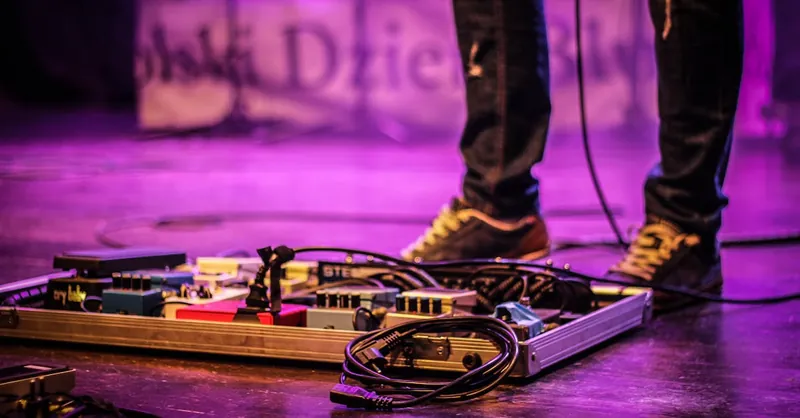
Image courtesy of Bartek Leszczyński
Pedal Techniques for Different Music Styles
Understanding how pedal usage varies across musical genres is key to developing expressive phrasing on the piano. The way you apply the sustain, soft, and sostenuto pedals can dramatically change depending on whether you’re playing classical, pop, or contemporary piano music. Each style has its own conventions and expressive goals, so adapting your pedal technique will help you sound authentic and emotionally engaging.
Classical Piano Pedal Usage
In classical music, pedal technique is often subtle and highly nuanced, designed to enhance phrasing without overwhelming the texture. Pianists typically use the sustain pedal sparingly and with precision to highlight legato lines or to create resonance at carefully chosen moments, avoiding excessive blending of harmonies. The soft pedal is frequently employed to add dynamic shades in delicate passages, especially in slow movements or lyrical sections. Meanwhile, the sostenuto pedal finds selective use in advanced repertoire to sustain specific bass notes or chords, providing a clear harmonic foundation while keeping melodic voices crisp. Mastery in classical piano pedaling involves listening deeply to tonal clarity and phrasing detail, ensuring the pedal complements rather than obscures the composer’s intent.
Pop Piano Pedal Usage
Pop music piano playing often favors more straightforward and accessible pedal approaches. The sustain pedal is used more freely to create a warm, full sound that supports vocal lines or band arrangements. Holding the pedal for longer durations is common, especially in slower ballads, to give a smooth, connected feel. However, context matters; lighter pedal use occurs in up-tempo or rhythmic pop pieces where clarity and beat definition are crucial. The soft pedal sees less use in pop, but beginners can experiment with it to add subtle dynamic contrast or soften repeated chords. The sostenuto pedal is rarely used in pop, as the music generally demands less complex layering.
Contemporary and Jazz Piano Pedal Usage
In contemporary and jazz piano styles, pedal use becomes even more flexible and experimental. Jazz pianists often use the sustain pedal selectively to enhance syncopated rhythms and phrasing nuance without blurring swung or staccato notes. The pedal may be lifted frequently to maintain rhythmic clarity. The soft pedal might be applied to create mellow tonal colors during ballads or introspective sections. Contemporary piano players often combine these pedals creatively, employing the sostenuto pedal in modern compositions to sustain harmonic pads or for ambient effects.
Key Takeaways for Expressive Pedaling Across Styles
- Classical: Emphasize clarity and articulation; use pedals judiciously for phrasing and tonal subtlety.
- Pop: Favor warmer, sustained sounds; use the sustain pedal more generously but mind rhythmic clarity.
- Contemporary/Jazz: Employ pedal as a rhythmic and tonal expressive tool; explore creative, sometimes unconventional use.
By tailoring your pedal technique to fit different music styles, you will enhance your expressive range and playing authenticity. Experiment within each genre, listen critically, and develop the pedal control needed to make every note and phrase truly sing.
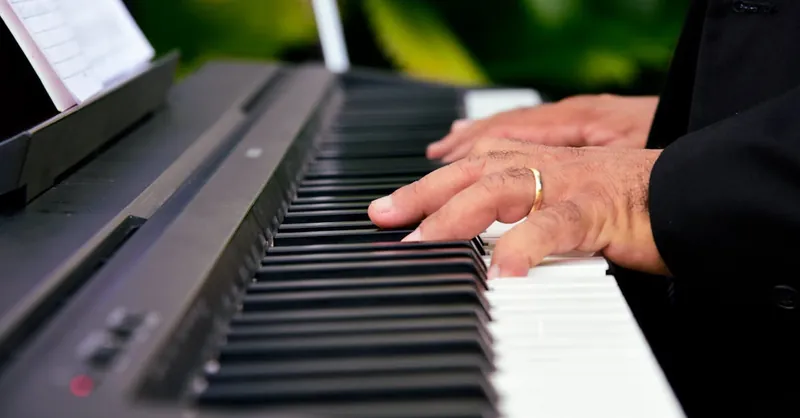
Image courtesy of Joel Uribe
Integrating Pedal Use with Finger Technique
For beginners, synchronizing pedal movement with finger lifting and playing is a critical skill that transforms your piano sound from disconnected notes into a clean, expressive legato. Pedal technique doesn’t operate in isolation—it must work hand-in-hand with your finger articulation to avoid blurred sounds and maintain clarity. Here’s how to master this integration for a polished and professional tone.
Coordinating Pedal Presses with Finger Lifts
When you play a note or chord, your fingers naturally lift to transition to the next sound. Ideally, you should:
- Press the sustain pedal just after releasing the keys to allow the initial attack of the notes to ring out cleanly.
- Lift the pedal momentarily when changing chords or notes, then press it down again almost immediately as you play the new notes. This technique—often called “pedal syncing” or “pedal change”—prevents unwanted overlapping and muddiness.
- Avoid holding the pedal continuously through finger movement, especially in fast or harmonic changes, to maintain precision and avoid a wash of indistinct sound.
Using Finger Technique to Support Pedaling
Your fingers also play a vital role in shaping the sound alongside the pedal:
- Practice smooth legato finger transitions by gently connecting notes without gaps, allowing the pedal to enhance the natural sustain rather than compensate for weak finger control.
- Develop finger independence and articulation so you can clearly distinguish between staccato and legato passages, knowing when to support with pedal and when to let the fingers speak alone.
- Use finger lifting as a cue for pedal changes, coordinating foot and hand movements to keep the sound seamless and expressive.
By consciously linking your finger technique with pedal timing, you ensure that your playing stays clean, controlled, and musically cohesive. This synchronization is foundational for executing passages with effective legato and clarity, helping you avoid the common beginner problem of over-pedaling muddying the sound. With practice, your ears will become attuned to the subtle interactions between keys and pedals, enabling you to use these tools as extensions of your musical expression rather than separate techniques.
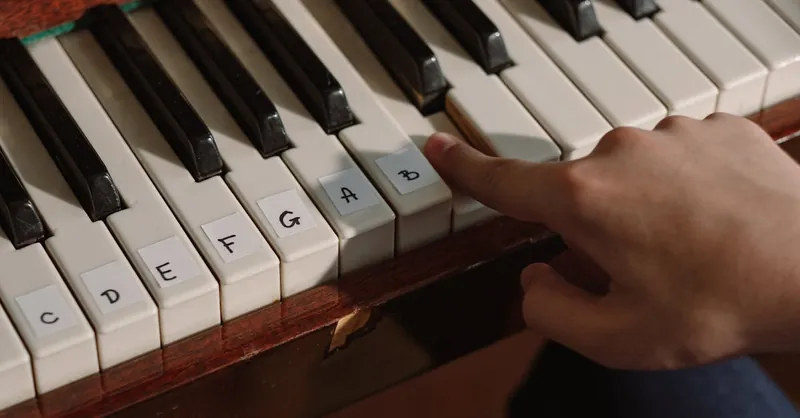
Image courtesy of cottonbro studio
Practice Exercises for Pedal Control
Developing precise pedal control is essential for every beginner pianist aiming to enhance their musical expression without causing unwanted sound muddiness. Practicing pedal technique with simple, structured exercises helps you build sensitivity to timing and smooth transitions between pedal presses and releases. This training strengthens your coordination between the foot and hands, ensuring that your pedal use supports rather than overwhelms your playing.
Step-by-Step Beginner Exercises for Pedal Mastery
- Single Note Pedaling Exercise
- Play a single middle C with your finger.
- Immediately after pressing the key, press the sustain pedal and hold for two beats.
- Release the pedal cleanly before playing the next note.
- Repeat, focusing on precise timing between finger release and pedal action.
Goal: Build awareness of the relationship between key presses and pedal timing, avoiding early or late pedaling.
- Simple Chord Pedaling with Clear Changes
- Choose two basic triads, such as C major and G major.
- Play each chord fully, pressing the sustain pedal just after playing, then lift briefly before changing chords.
- Practice switching between chords smoothly, aiming for no overlap or blurred sound.
Goal: Develop clean pedal transitions that keep chord changes distinct and harmonically clear.
- Pedaling Through a Slow Scale
- Play a slow C major scale ascending and descending in one-octave range.
- Use the pedal to connect the notes legato by pressing and releasing the pedal in sync with each note change.
- Focus on lifting the pedal momentarily with each note to prevent excessive overlap.
Goal: Coordinate precise pedal timing with finger movement, creating a smooth yet clear legato line.
Simple Songs to Practice Pedal Sensitivity
-
“Ode to Joy” (Beethoven)
This well-known melody features straightforward rhythms and chord changes perfect for experimenting with pedal syncing and timed releases. -
“Twinkle, Twinkle, Little Star”
Use the sustain pedal selectively on longer notes to practice controlled pedal lifts, developing dynamic variation as you repeat phrases. -
“Für Elise” (Opening Phrase)
Once comfortable, try sustaining the melody notes with the pedal while allowing accompaniment chords to remain crisp without unwanted blur.
By integrating these beginner exercises and simple songs into your daily practice, you will strengthen your pedal sensitivity and control, reduce common issues like over-pedaling, and gain confidence in using the pedals as expressive tools. Remember, effective pedal usage depends on listening carefully to the sound you produce and adjusting your foot movements accordingly, turning your piano playing into a richer, more fluid musical experience.
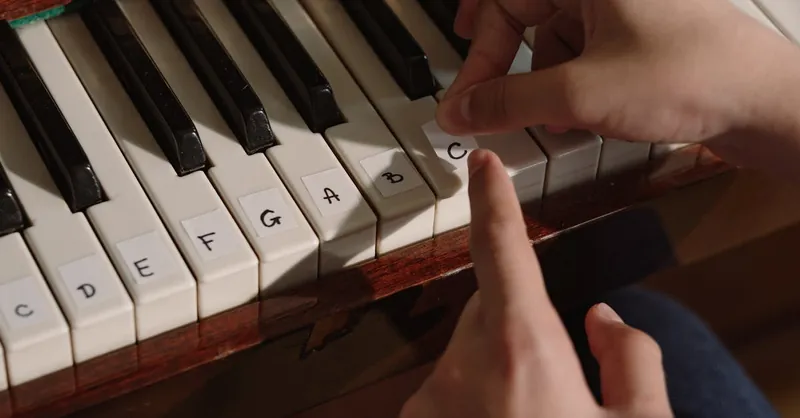
Image courtesy of cottonbro studio
Listening and Adjusting: Training Your Ear for Pedal Effects
Developing a critical ear for pedal usage is one of the most important skills a beginner pianist can cultivate to improve pedal timing and sound quality. Pedals are not just mechanical tools but expressive extensions of your playing; they color the music and contribute to its emotional impact. Learning to listen attentively to how the sustain, soft, and sostenuto pedals affect your sound enables you to make subtle adjustments that elevate your overall performance.
How to Listen Critically to Your Pedaling
-
Focus on Clarity vs. Muddiness
As you practice with the pedal, listen carefully for moments when the sound becomes blurred or muddy. If chords or notes overlap excessively, it’s a sign that the pedal is being held too long or pressed too early. Conversely, if the sound feels disconnected or dry, the pedal may be lifted too quickly or not used enough. -
Notice the Articulation and Tone Color
Pay attention to how the pedal changes the character of your playing—from the bright attack of freshly struck notes to the lingering resonance that fills the space between sounds. Training your ear to distinguish these textures will help you decide exactly when to engage or release the pedal for the desired musical effect. -
Record and Playback Your Practice
Utilizing audio or video recordings of your practice sessions offers an objective perspective on your pedal technique. Listening back allows you to detect inconsistencies in pedal timing, unwanted overlapping sounds, or dynamic imbalances that might not be obvious in the moment of playing.
Tips for Making Real-Time Pedal Adjustments
- Adjust Pedal Timing Based on Musical Phrasing: Pedal changes should align with the phrasing and harmonic shifts in the music rather than a fixed rhythm. This awareness helps prevent muddy harmonies and enhances the natural flow of your pieces.
- Use Gradual Pedal Movements: Instead of abrupt pressing or releasing, try slightly lifting or depressing the pedal to create smoother transitions and avoid jolting changes in sound.
- Balance Between Fingers and Pedal: Resist the temptation to rely solely on the pedal to create legato or dynamics. Instead, use a combination of finger articulation and pedal technique, adjusting pedal use when your finger touch varies.
By training your ear to listen critically and making conscious adjustments, you transform pedal usage from a technical hurdle into a powerful expressive tool. Over time, you’ll develop instinctive control over pedal effects, resulting in piano performances that are both clear and emotionally compelling.
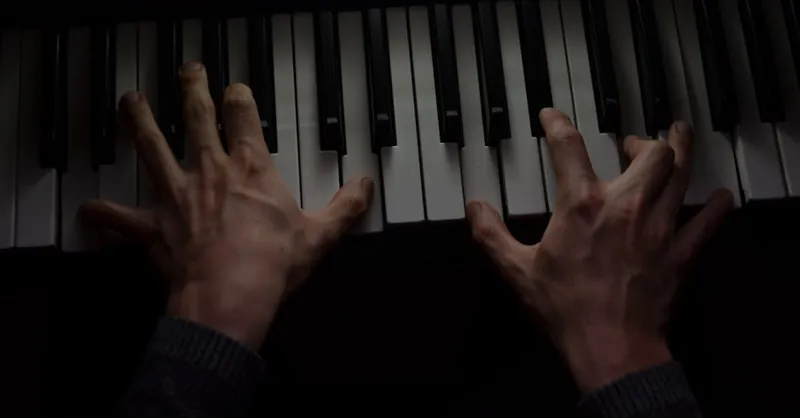
Image courtesy of Nicolás León
Choosing the Right Digital or Acoustic Piano Pedal Setup
For beginners, selecting the appropriate pedal equipment—whether for an acoustic piano, a digital keyboard, or a stage piano—is a crucial step in developing effective pedal technique and achieving authentic piano expression. Different piano types require different pedal setups, and understanding these differences can help you make informed decisions that enhance your playing experience and prevent frustration.
Acoustic Piano Pedal Setup
Traditional acoustic pianos typically come equipped with the three standard pedals: sustain, soft (una corda), and sostenuto. These pedals are built into the instrument and offer the most immediate and natural response because they mechanically interact with the piano’s strings and dampers. For beginners:
- Ensure your foot comfortably reaches the pedals: Proper seating position and pedal height adjustments (if possible) are vital to facilitate smooth, controlled pedal use.
- Familiarize yourself with pedal resistance: Acoustic pedals have a particular feel and gradual resistance that helps regulate subtle pedal movements—something to get used to as you practice.
- Avoid after-market pedal add-ons if you own an acoustic piano, as they generally are unnecessary unless for specific accessibility needs.
Digital Piano and Keyboard Pedal Options for Beginners
Digital pianos and keyboards often vary in pedal functionality and quality. Most beginner keyboards come with a single sustain pedal, but better digital pianos replicate the full three-pedal setup. When choosing or upgrading your pedal setup for digital instruments, consider the following:
- Types of Pedals for Digital Pianos
- Sustain pedals: The simplest and most common, designed to function like the acoustic sustain pedal. Look for one with a half-damper function if possible, as it allows partial pedal pressing for nuanced control.
-
Three-pedal units: Some companies manufacture three-pedal accessories that attach to digital pianos via USB or MIDI, replicating the acoustic layout (sustain, soft, sostenuto). These provide more expressive options but may be pricier.
-
Pedal Build and Sensitivity
- Choose pedals with good build quality and stable bases to prevent slipping during play.
-
Pedals with adjustable sensitivity or half-pedaling support allow for more expressive control, closely mimicking acoustic piano pedal behavior.
-
Compatibility and Connectivity
- Verify your digital piano’s pedal input type (usually a 1/4" jack) and ensure the pedal unit you purchase is compatible.
-
USB or Bluetooth pedal options are emerging but remain less common; most players rely on traditional wired connections for reliability.
-
Budget Considerations
- For absolute beginners, a simple, affordable sustain pedal is adequate to start developing pedal skills.
- As you progress, investing in a full three-pedal board that supports half-pedaling can significantly enhance your practice and performance.
Tips for Using Pedals with Stage Pianos and Keyboards
- Position pedals ergonomically to ensure your foot naturally rests on the pedal without strain, helping avoid tension during long practice sessions.
- Practice pedal technique with the actual equipment you’ll perform on, as digital pedals’ feel may differ from acoustic ones.
- Explore built-in pedal functions on stage pianos, as some models allow assigning pedal roles or adjusting pedal behavior electronically, offering customizable expressive controls.
By choosing the right pedal setup based on your instrument type—acoustic or digital—and your skill level, you ensure that your pedal technique development is smooth, natural, and effective. This foundational step supports your journey from beginner to confident pianist, enabling you to unlock the full expressive potential of your playing through accurate and sensitive pedal use.
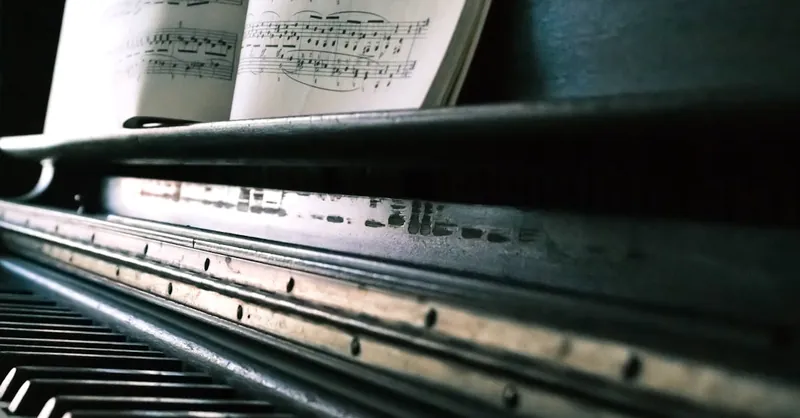
Image courtesy of Steve Johnson
